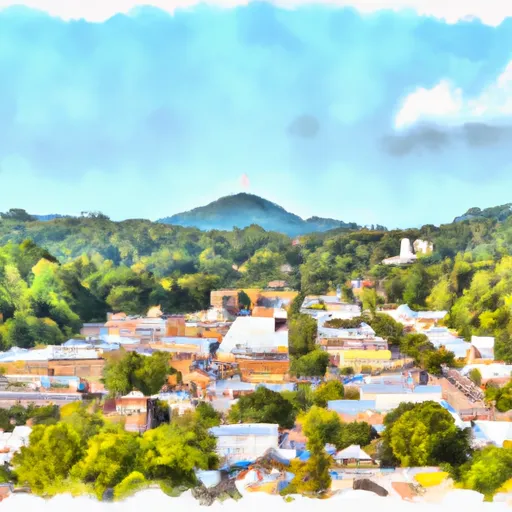-
 Snoflo Premium
Snoflo Premium
Get unlimited access to all our content
With no Ad interruptions! - Start Your Free Trial Login with existing account
Portal
Eden Index
Climate
8.2
•
Recreation
2.9
•
Community
1.7
•
Safeguard
4.7/10

Portal, Georgia is a small town located in the southeastern part of the state. The climate in Portal is categorized as humid subtropical, with hot and humid summers and mild winters. The average high temperature in the summer months ranges from the mid-80s to low 90s°F (29-33°C), while winter temperatures typically range from the upper 40s to low 60s°F (8-16°C).
The town's hydrology constituents mainly consist of the Ogeechee River, which flows a few miles south of Portal. This river provides opportunities for various outdoor activities, including fishing, boating, and kayaking. Additionally, the nearby George L. Smith State Park offers a tranquil environment for camping, hiking, and birdwatching. The park also features a mill pond for fishing and canoeing.
For those who enjoy hunting, the region around Portal is known for its abundant wildlife, making it a popular destination for deer, turkey, and small game hunting. The surrounding forests and rural landscapes provide ample opportunities for exploration and nature appreciation.
Overall, Portal, Georgia offers a pleasant climate, access to the Ogeechee River, and a range of outdoor recreation opportunities, making it an appealing destination for nature enthusiasts.
What is the Eden Index?
The Snoflo Eden Index serves as a comprehensive rating system for regions, evaluating their desirability through a holistic assessment of climate health, outdoor recreation opportunities, and natural disaster risk, acknowledging the profound impact of these factors on livability and well-being.
Climate Health Indicator (CHI): 8.2
Portal receives approximately
1181mm of rain per year,
with humidity levels near 86%
and air temperatures averaging around
19°C.
Portal has a plant hardyness factor of
8, meaning
plants and agriculture in this region tend to thrive here all year round.
By considering the ideal temperature range, reliable water supplies, clean air, and stable seasonal rain or snowpacks, the Climate Health Indicator (CHI) underscores the significance of a healthy climate as the foundation for quality living.
A healthy climate is paramount for ensuring a high quality of life and livability in a region, fostering both physical well-being and environmental harmony. This can be characterized by ideal temperatures, reliable access to water supplies, clean air, and consistent seasonal rain or snowpacks.
Weather Forecast
Streamflow Conditions
Ogeechee
Area Rivers
Ogeechee
Snowpack Depths
Ogeechee
Reservoir Storage Capacity
Ogeechee
Groundwater Levels
Recreational Opportunity Index (ROI): 2.9
The Recreational Opportunity Index (ROI) recognizes the value of outdoor recreational options, such as parks, hiking trails, camping sites, and fishing spots, while acknowledging that climate plays a pivotal role in ensuring the comfort and consistency of these experiences.
Access to outdoor recreational opportunities, encompassing activities such as parks, hiking, camping, and fishing, is crucial for overall well-being, and the climate plays a pivotal role in enabling and enhancing these experiences, ensuring that individuals can engage in nature-based activities comfortably and consistently.
Camping Areas
| Campground | Campsites | Reservations | Toilets | Showers | Elevation |
|---|---|---|---|---|---|
| Gordonia-Alatamaha State Park | None | 187 ft | |||
| Magnolia Springs State Park | None | 185 ft | |||
| Lick Fork Lake | 6 | 491 ft | |||
| George L Smith State Park | None | 223 ft |
Catastrophe Safeguard Index (CSI):
The Catastrophe Safeguard Index (CSI) recognizes that natural disaster risk, encompassing floods, fires, hurricanes, and tornadoes, can drastically affect safety and the overall appeal of an area.
The level of natural disaster risk in a region significantly affects safety and the overall livability, with climate change amplifying these risks by potentially increasing the frequency and intensity of events like floods, fires, hurricanes, and tornadoes, thereby posing substantial challenges to community resilience and well-being.
Community Resilience Indicator (CRI): 1.7
The Community Resilience Indicator (CRI) recognizes that education, healthcare, and socioeconomics are crucial to the well-being of a region. The CRI acknowledges the profound impact of these elements on residents' overall quality of life. By evaluating educational resources, healthcare accessibility, and economic inclusivity, the index captures the essential aspects that contribute to a thriving community, fostering resident satisfaction, equity, and social cohesion.

